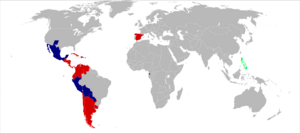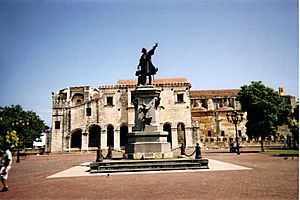Hispanic facts for kids
The word Hispanic first meant something related to Hispania. This area includes modern-day Spain, Portugal, Andorra, and Gibraltar.
Today, the word "Hispanic" often has a more specific meaning. In the United States, it usually refers to people who have a Spanish last name and often a mixed background. In North America, the word "Hispanic" mostly means people and cultures from Latin America. This includes countries like Mexico, most of Central America and South America, and Spanish-speaking islands in the Caribbean.
You can also find Spanish names, the Spanish language, and Spanish traditions in other places that were once part of the Spanish and Portuguese Empires. Examples include Equatorial Guinea in Africa, the Philippines, and Brazil (which was a Portuguese colony).
Contents
Spanish-Speaking Countries and Regions
| Countries where Spanish is spoken |
| Spanish is the only official language |
| Spanish is one of the official languages |
| Spanish used to be an official language and is now an important helper language |
Spanish is one of the most spoken languages in the world. During the time of the Spanish Empire (from 1492 to 1898), many people moved from Spain to the lands they explored and settled. These Spaniards brought their Castilian language and culture with them. This long process helped create a huge global empire with many different kinds of people.
Languages and People in Spanish-Speaking Areas
| Continent/Region | Country/Territory | Main Languages Spoken | Main Ethnic Groups | Picture | |
|---|---|---|---|---|---|
| Europe | Spain | Spanish (official) 70%, Catalan 20%, Galician 7%, Basque 2% (official in some regions). Spanish is spoken by everyone. | 88.0% Spanish people, 12.0% others (like Romanians, British, Moroccans, Hispanic Americans, Germans) (2009) |  |
|
| Andorra | Catalan (official) 57.7%, Spanish 56.4%, French 14.5%, Portuguese 13.9% |  |
|||
| North America | Mexico | Spanish 92.7%, Spanish and other language 5.7%, native languages only 0.8%, unspecified 0.8%. Native languages include Mayan, Mixtec, Nahuatl, Purépecha, Zapotec. (2005) | Mestizo (mixed European and Native) 65%, Native American (or mostly Native) 17.5%, White (full Spanish or other European) 16.5%, other (including a small Black group) 1% |  |
|
| United States | English 79.4%, Spanish 12.8%, other European languages 3.7%, Asian and Pacific Islander languages 3.0%, other 0.9% (2010 census). Hawaiian is official in Hawaii. | White 79.96%, Black 12.85%, Asian 4.43%, Native American and Alaska Native 0.97%, Native Hawaiian and other Pacific islanders 0.18%, two or more races 1.61% (July 2007 estimate) |  |
||
| Central America | Belize | Spanish 43%, Belizean Creole 37%, Mayan dialects 7.8%, English 5.6% (official), German 3.2%, Garifuna 2%, other 1.5% | Mestizo 34%, Kriol 25%, Maya peoples 10.6%, Garifuna 6.1%, other 11% (2000 census) |  |
|
| Costa Rica | Spanish (official) | White 81%, Mestizo 13%, Black 3%, Native American 1%, Chinese 1% Other 1% |  |
||
| El Salvador | Spanish (official) | Mestizo 86%, White 12%, Native American 1% |  |
||
| Guatemala | Spanish 59.4%, Native American languages 40.5% (23 official Native American languages, including K'iche, Kakchiquel, Kekchi, Mam, Garifuna, and Xinca). | Mestizo 41%, K'iche 9.1%, Kaqchikel 8.4%, Mam 7.9%, Q'eqchi 6.3%, other Maya peoples 8.6%, non-Mayan native 0.2%, other 0.1%, White 18.5% (2001 census) |  |
||
| Honduras | Spanish (official), various Native American languages (including Garifuna, Lenca, Miskito, Ch’orti’, and Tol). English (on the Bay Islands) | Mestizo (mixed Native American and European) 90%, Native American 7%, Black 2%, White 1% |  |
||
| Nicaragua | Spanish 97.5% (official), Miskito 1.7%, others 0.8% (1995 census). English and native languages on the Atlantic coast. | Mestizo (mixed Native American and European) 69%, White 17%, Black 9%, Native American 5% |  |
||
| Panama | Spanish (official), English 14% (bilingual: needs checking) | Mestizo (mixed Native American and European) 70%, Black 14%, White 10%, Native American 6% | 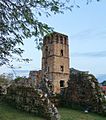 |
||
| South America | Argentina | Spanish (official), other European and Native American languages | European Argentine 86% (mostly Spanish and Italian background), Mestizo, Native American and other non-European groups (including Arab, East Asian, and Black minorities) 14% |  |
|
| Bolivia | Spanish 60.7% (official), Quechua 21.2% (official), Aymara 14.6% (official), foreign languages 2.4%, other 1.2% (2001 census) | Quechua 30%, Mestizo (mixed White and Native American) 30%, Aymara 25%, White 15%, small Black group. | 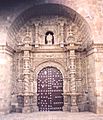 |
||
| Chile | Spanish (official), Mapudungun, other European languages | White 52.7%, Mestizo 44.1%, Native American 3.2% |  |
||
| Colombia | Spanish (official), 68 native languages and dialects. English is also official in the San Andrés, Providencia and Santa Catalina Islands. | Mestizo 49%, White 37%, Black 10.6% (includes Mulatto and Zambo), Native American 3.4%, Roma 0.01%, among other groups. |  |
||
| Ecuador | Spanish (official), Native American languages (especially Quechua) | Mestizo (mixed Native American and White) 65%, Native American 25%, White 7%, Black 3% |  |
||
| Paraguay | Spanish (official), Guaraní (official) | Mestizo (mixed European and Native American) 74.5%, White 20%, Mulato 3.5%, Native American 1.5% |  |
||
| Peru | Spanish (official), Quechua (official), Aymara, and many smaller Amazonian languages | Mestizo 38%, Quechua 29.7%, Aymara 4.7%, Amazonian 1.8%, White 15.5%, Black 5%, East Asian 3.3%. | 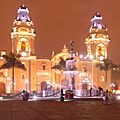 |
||
| Uruguay | Spanish (official) | White (mostly Spanish and Italian background) 88%, Mestizo 8%, Black 4%, Native American (less than 0.5%) |  |
||
| Venezuela | Spanish (official), many native dialects | Mestizos (mixed Native American, White and African) 49.9%, White 42.2%, Black 3.5% and Native Americans 2.7% |  |
||
| Caribbean Islands | Cuba | Spanish (official) | White 69.1% (mostly Spanish and Portuguese, or other European and British background), Mulattoes 20.7%, Black 10.2% (2002 census) |  |
|
| Dominican Republic | Spanish (official) | Mestizo 44%, Mulatto 30%, White 16%, African 10% | |||
| Puerto Rico (A territory of the U.S. with Commonwealth status) |
Spanish, English | White (mostly Spanish background) 76.2%, Black 6.9%, Asian 0.3%, Native American 0.2%, mixed 4.4%, other 12% (2007) |  |
||
| Africa | Equatorial Guinea | Spanish 67.6% (official), other 32.4% (includes the other 2 official languages - French and Portuguese, Fang, Bube, Annobonese, Igbo, Krio, Pichinglis, and English) (1994 census).
Note: Equatorial Guinea was the only Spanish colony in Sub-Saharan Africa. |
Fang 85.7%, Bubi 6.5%, Mdowe 3.6%, Annobon 1.6%, Bujeba 1.1%, other 1.4% (1994 census) | 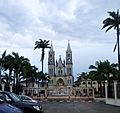 |
|
| Polynesia | Easter Island A territory of Chile |
Spanish (official), Rapanui | Rapanui |  |
Images for kids
See also
 In Spanish: Hispanos para niños
In Spanish: Hispanos para niños



